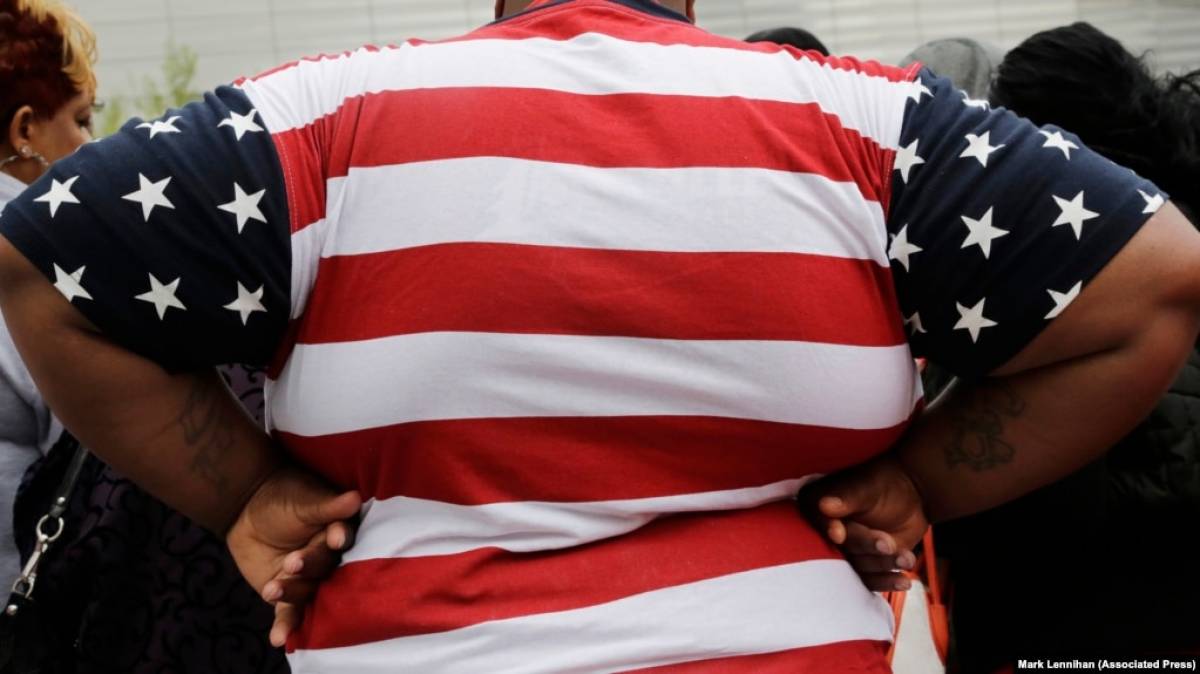Obesity and Its Devastating Consequences in America

America as a nation has repeatedly set the gold standards and bar high for the world, getting success in so many industries like tech, businesses, healthcare innovations, education, and the list could go on for days. But data sourced from many experts shows obesity in the U.S has consistently increased.
Over the five years to 2022, IBISWorld estimates that the obesity rate among adults aged 18 and older has increased an annualized 1.8% to 33 people per 100 individuals.
Americans will become less healthy because they are overweight or obese, with the number of states in which at least 35% of residents have obesity nearly doubling since 2018 according to the CDC.
Why is America failing with high obesity prevalence? What is causing a world power to succumb to an avoidable condition, with real fears that half of America will soon be obese within the next 10 years?
Well, there are quite a few theories and conclusions that experts have drawn about this issue. It all boils down to some key factors that include but are not limited to sedentary lifestyles, inconsistent advertisements, lack of food education, stress eating, poverty, and food deserts.
U.S Obesity Epidemic and Crisis
America is facing a deadly slow poison in the name of obesity; burying our heads in the sand and being passive about this condition will bring about deadly consequences.
A sedentary lifestyle is where there is little to no physical activity or movement throughout the day. In 2014 alone, 83 million Americans reportedly lived a sedentary lifestyle. How do people manage to live like this, one may ask? It isn’t so difficult to figure that out.
People are usually lounging on their couches or staying in bed indoors. Work involves sitting on a chair, for 8 to 10 hours straight, with few breaks.
Transportation includes sitting on a bus, car, or train for 1-2 hours, and bicycling isn’t something people with busy schedules want to do.
Outdoor outings usually involve sitting at a restaurant, park, or the movies. Community and social outings also entail sitting at a church mass or a wedding party.
Of course, there are activities like shopping or clubbing which require some level of physical exertion, but those are few and far between compared to all the inactive ones.
One way to tackle this is to make mindful lifestyle changes. Health guidelines recommend we have at least 150 minutes of activity weekly.
So, instead of taking the elevator, use the staircase. Walk or take the bicycle to work. Go for hikes instead of the restaurant the next time you are out.
Do your chores regularly instead of procrastinating to do them all in one day so that you maintain a regular flow of movement.
Bad Food Habits Causing Obesity

America has a contradictory relationship with food. On the one hand, fast food deals and advertisements of greasy burgers and fries are flashed in our faces around every street corner, while on the other hand we spend $20 million annually on weight loss tactics, like diet books, pills, even lap-bands, and liposuction. There is a noticeable pattern here: shortcuts.
Fast food is cheap, tasty, filling, and perceived to be convenient as you can get it on the go. Fad diet schemes also promise rapid results with little effort. These are both appealing to the average person who works hard and wants a quick fix to problems.
Over the past decade, fast food has been rebranded and marketed as being low-fat ad low-calorie. It has tried to gain public trust with the promise that it can deliver taste without damaging our health. However, such a promise would be too good to be true.
The unfortunate truth is food companies replace animal fat with hydrogenated oils and sugars in low-fat products. These hydrogenated oils become trans fats, with sugars that raise bad cholesterol, lower good cholesterol, and increase the risk of developing heart disease, stroke, and diabetes.
So, although fast foods may nowadays be lower in calories, it doesn’t necessarily contribute nutritional value to our bodies. The way out of this mess?
For starters, we must have good discernment in whatever advertisements we receive. We must see through the facade and gimmick of all this.
Secondly, we must make lifestyle changes that are practical and sustainable while being effective as well.
We must also make cooking a priority. We should cook our meals using fresh produce, whole grains, complex carbohydrates, and healthy proteins.
In the quest for weight loss, we must make lifestyle changes that drastically minimize the consumption of junk while developing wholesome eating habits.
Financial Challenges Driving Obesity

We can all agree that the US economy has seen better days. Unemployment and underemployment are high. Big businesses are outsourcing American jobs overseas for cheap labor, making it hard for Americans to have gainful employment.
That brings about a lot of stress, especially when livelihoods are at stake and the future is bleak. With financial hardships and economic uncertainties, people often resort to stress-eating to feel good from the dopamine high produced for the moment.
Stress-eating gives people a distraction from the primary cause of their pain. People usually resort to this bad habit as an easy coping mechanism not knowing how much harm it can bring.
Another issue facilitating stress-eating is that fast food is very cheap, while healthy organic foods are expensive. According to the Harvard School of Public Health, nutritious diets in America cost approximately $1.50 more per day than eating unhealthily. Unsurprisingly, poverty-stricken Americans opt for the cheaper alternative to save a few bucks here and there.
It is upto the government to address this issue for the sake of its people. Government should make it easier for businesses to thrive here and create more jobs for resident citizens. They must also oblige corporations to hire more Americans and allow them to have steady and secure jobs. This plan could cut out 75% of financial stress that weighs people down who then resorts to stress eating.
Another suggestion that could help is to increase fast food prices while lowering healthy food costs, so that ordinary people can afford healthy foods and start changing their dietary habits. It would be a constant nudge towards the right direction.
Fixing Food Deserts to Fight Obesity

Food deserts are geographical areas that lack fresh produce and other whole foods. They exist in cities, suburbs, and rural areas and impact all races nationwide. But food deserts are usually in impoverished areas and are considered a national crisis. In a 2006 survey, about 500,000 city residents in Chicago were living in food deserts. That is a staggering statistic.
Oftentimes, food deserts are in low-income areas with a higher concentration of people of color, in which people seldom have necessary amenities, including cars or reliable means of transport to go shopping for healthy foods. Public transport could alleviate this issue to a certain extent.
However, other economic issues like high rent have driven grocery stores out of the city and into the suburbs. These stores tend to be far, and doing groceries would be a laborious task, where the cost, time, and effort required to carry the bags such long distances are too great.
As a result, people resort to cheap, unhealthy, and perceived convenient options. For them, survival is the main priority. They do not have the disposable income to have the luxury of healthy food. Thus, people end up eating unhealthy diets and becoming overweight which causes various health issues, including diabetes, high blood pressure, and heart illnesses.
There are several ways to tackle this issue:
- Bus stop farmers market initiatives can make fresh produce easily accessible.
- Making community gardens a priority in every neighborhood can also bring awareness to the value of fresh food.
- Limiting the number of dollar stores in an area could also bring down the problem of food deserts. Dollar stores are often the biggest culprits that sells junk at low cost.
- Additionally, where the owners of privately owned supermarkets don’t want or can’t provide fresh, healthy, and nutritious food in urban or rural food deserts, then nonprofits and government-run supermarkets should take over instead to provide that.
The battle against obesity is not easy, but it is necessary. Americans, and people around the world, need to garner more food knowledge, do more physical exercises, and make healthy lifestyle changes.
The government and community leaders must also play their part in mitigating all this, ensuring there is fresh food stores particularly in food deserts. If such changes happen, America does have a fighting chance. Otherwise, the future looks bad for the whole nation.





















